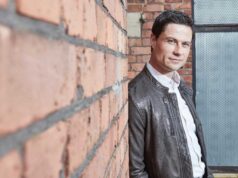Research-Based Business Development
Building bridges between theory and practice is becoming increasingly important. We live and work in a knowledge-based society where new information is constantly being processed and published – demanding our attention almost everywhere and all the time. An enormous amount of research is being produced, but seldom used. Our greatest challenge seems to lie in how to find meaning in a jungle of information that continues to grow (Weick, 1995). Contemporary society appears to be caught up in a knowledge and information generating spin that has reached the point of overload.
The article you are reading is yet another product of a knowledge-based society gone mad. The only difference between this text and so many others is that it argues for less publication and more application – for the use of knowledge instead of, or in addition to, the diffusion of knowledge.
It is time to build a stronger bridge between the worlds of academia and business.
One way to construct such a bridge is through research-based business development (RBBD): a collaborative approach that effectively uses the ever-increasing pool of knowledge to solve practical problems in an innovative and inspiring way.
TOO MUCH PUBLICATION – TOO LITTLE APPLICATION
In recent years, universities and other educational institutions have produced millions of graduates with the intention of bringing the newest theories to the workplace. A broad consensus has evolved around a “growth through innovation, knowledge and education” discourse that has come to dominate in many societies.
It appears that the production of knowledge has reached its limits: that the supply side of the equation has risen to a level that far exceeds the demand – resulting in a surplus that risks devaluing knowledge itself.
The problem is further exacerbated by the design of the education system and the incentive structure prevailing at the universities. Researchers and educators that wish to secure their own employability need to disseminate their research: the phrase “publish or perish” refers to the pressure in academia to rapidly and continually publish academic work to sustain or further an academic career. The application of these publications is seldom taken into account. This system leaves a lot of research published and never put to use.
 Faced with this deluge of seemingly innavigable information are the organizations that continue to be subjected to lean and mean cost-cutting and work optimization processes. This leaves limited time and resources available to construct or locate and select the most appropriate information for their needs.
Faced with this deluge of seemingly innavigable information are the organizations that continue to be subjected to lean and mean cost-cutting and work optimization processes. This leaves limited time and resources available to construct or locate and select the most appropriate information for their needs.
Consequently, many organizations leave their problems to consultants that claim to be updated on the most current research within their fields. Many consultants are not.
Consultants may know very little of what is actually going on in their field, or the knowledge that they have may be limited to the dominant discourse or the few tools that some researchers have devoted time to introduce to the market. Much of a consultant’s time is spent in marketing and sales to attract new customers, in finding problems to solve within existing customer relationships, and in performing administrative tasks. Consultants have limited resources and possibilities of knowing the latest research and its nuances in breadth and depth.
_____
READ ALSO: Henry Mintzberg: Transformation from the Top? How about Engagement on the Ground?
_____
At the end of the day, little consideration is given to keeping track of the research progress – especially because such consideration cannot be assigned directly to any one customer to generate income. There is a tendency to favor a few trending strategies and apply these to all organizations despite the variety of their empirical situation or issues (DiMaggio & Powell, 1991). Awareness of this tendency is not new. The syndrome is, in fact, typical and genuine. If you have a hammer, all problems tend to look like nails (Martin, 2002).
If you have a hammer, all problems tend to look like nails
At the end of the day, there are few incitements in the academic world to put research to practical use and little time in the business world to scrutinize and properly utilize the pool of knowledge.
RESEARCH-BASED BUSINESS DEVELOPMENT AS A WAY FORWARD
Given the constraints presented above, the daunting question arises: Is it possible to build a solid bridge between the academic and the empirical worlds?
The answer is yes.
One practical approach is to employ research-based business development. Using this method the bridge-builder strives to wrest off predetermined solutions to look and listen objectively. This improves the conditions for understanding the people and the problems at play in their own terms, and not within the frame of a dominating theory or in the shadow of a new wave of tools.
_____
READ ALSO: What is Responsible Leadership?
_____
Based on the development of specific and emic understandings, the bridge-builders can then translate their insights into generalized and etic terms and turn towards the academic fields of research to search for tools and theories that can best address the issue, answer the question or solve the problem.
In the following case study, the procedures behind RBBD are described and explained in further detail.
FIND THE FUTURE – A CASE STUDY
A year ago I was contacted by a consultant from the Danish Technological Institute who was assisting a Danish HR consultancy firm called FindFremtiden (in English Find the Future and in the following named FF Consult).
FF Consult is a newly established company founded by a professional sports trainer and coach with years of experience in team building, goal setting, and strategizing. FF Consult delivers products to support personal development and organizational growth such as mindfulness, well-being, and work satisfaction, as well as strategizing, goal setting, team building, and leadership.
BUSINESS PROBLEM
FF Consult contacted The Danish Technological Institute because they were experiencing problems in their sales – specifically, in closing the deal. Often they were in dialogue with the customer through an HR professional who knew the potential value of the specific HR service, but sometimes failed to sell the service to their financial or e conomic controller sitting in the back office analyzing numbers and allowing investments.
conomic controller sitting in the back office analyzing numbers and allowing investments.
The problem was that the mutual understanding that FF Consult had obtained with the HR representative, the potential customer, was challenged by the different logic and language in the back office among their finance-focused peers or superiors. Therefore a vital part of our solution was translation – from a soft human resource management (HRM) language to a hard return on investment (ROI) language.
RESEARCH SOLUTION
Having determined the problem, we started out by selecting a handful of keywords associated with the services that FF Consult was experiencing the most difficulty selling. Among these were job satisfaction, well-being, team building, goals and strategizing.
The subsequent task then became to find qualified, appropriate, and pertinent research documents demonstrating the hard effects of these soft interventions.
Methodology: Finding Relevant Knowledge
To find the most suitable research to address FF’s issues a structured search was conducted.
The search engine Business Source Complete was used to find published research texts that contained information on one or more of FF’s key services.
In order for a text to be considered qualified, it had to meet a set of specific criteria. The text had to be an article available in full text, not just a summary, review, or other inadequate text. The article had to be published in an academic journal, not a newspaper, magazine, or other less rigorous outlets. The academic journal had to have a peer-reviewing process ensuring other experts in the field had read, evaluated, and approved the article before its publication. This search resulte d in 21,907 qualified papers – demanding further refinement.
d in 21,907 qualified papers – demanding further refinement.
The almost 22,000 texts were then subjected to another set of criteria to ensure they were appropriate. The article had to be published within the last 10 years to exclude outdated knowledge. The article had to be written in English to ensure that the text is understandable and relevant to a broad audience. The article had to be based on relevant data from developed countries with post-industrial economies, not underdeveloped or developing countries still in the process of industrialization.
_____
READ ALSO: Sandja Brügmann: The Future Leader is Ethical, Passionate, Bold & Driven by Purpose
_____
To further narrow the search we ensured that the keywords that we had chosen were found in the article titles and not just embedded in the text. Finally, ROI words such as performance and productivity, focusing on the financial effects of the services, were added. The elimination continued until the number of hits was below one hundred for each of FF’s five key services.
The approximately 500 texts were then screened to ensure they would pertain to FF Consult’s issues. Three criteria were taken into account: the relevance of the title, the ranking of the journal, and the applicability of the content based on the abstract. The screening continued until it resulted in less than 20 articles per key service (job satisfaction 8, well-being 10, team building 10, goals 11, strategizing 13).
In the final selection process, the 52 texts were read through with FF Consult’s practical sales problem kept in mind. The articles that most adequately addressed the performance effects of FF Consult’s key services were chosen.
Applicability: Delivering Relevant Findings
The points and paragraphs that spoke most precisely to the business problem were transformed into a presentation and report that was explained and discussed with representatives from FF Consult and The Danish Technological Institute. The research results provided new insights and inspired new ideas that led to innovative experiments and solutions for FF Consult.
The value of the collaboration is long-term and many of the measurable effects may not yet have materialized. The following are a few examples of how the research was implemented and generated value.
Inspiration & Innovation: A Developing Business
Reviewing the research with FF Consult in more detail inspired new developments and improvements to existing concepts and products.
For instance, an article on outperforming teamwork led to a discussion and identification of a book addressing the potential and pitfalls of great teamwork. A summarizing article of the points was presented to FF Consult and implemented in an innovative process to further develop their team building concepts. This gave rise to new lectures, discussions, and tasks within their team building workshops.
Another article championed the use of the word ‘uniqueness’ as an alternative to the traditional dividing of peoples’ profiles into positive and negative laden words like ‘strengths’ and ‘weaknesses’. This new perspective gave inspiration to the development of a new model that is used in FF Consult’s key services on personal development.
This model enables FF Consult’s clients to see themselves in a new light which opens up alternative ways of relating to others – like coworkers, peers, superiors, and subordinates as well as suppliers and customers. “We have had great success with this new model”, says Bo Tolstrup, the managing director and business developer at FF Consult.
In short, the research served as a valid basis for innovative business developments, like the concept and product developments, within FF Consult’s key services.
Competence & Confidence: A Solid Foundation
The documentation of the positive effects of FF Consult’s key services in high-quality research also gave FF Consult’s members a more nuanced understanding of their services and the foundations and beliefs that their business was built upon.
The articles explained the dynamics and reasons behind the workings of the key services in a theoretical way, providing explanations of why they do what they do, why they say what they say, and why they believe what they believe.
This deeper understanding of the key services contributed to FF Consult’s members’ confidence and competence which are of vital importance when selling and delivering their services.
_____
READ ALSO: Competitive Advantage is Dead. Long live Collaborative Advantage!
_____
Identity & Image: A Serious Company
The overall research collaboration, as well as the concrete research documentation, served as dynamic resources in the process of developing FF Consult’s identity and image in an evidence-based direction. The fact that FF Consult’s members are able to point to an academic reference to underpin their claims gives them increased credibility with their clients, imbuing them with greater trust in their words, services, and overall business.
FF Consult’s collaboration with members of research institutions lifts the business as a whole, presenting it in a new and more accredited light. This applies both internally, in the way that FF Consult’s members perceive the organization’s identity, and externally, in the way that their stakeholders, suppliers, collaborators, customers, and potential clients perceive the organization’s image.
Vocabulary & Language: A Performance Argument
FF Consult’s former identity and image were primarily based on the founder’s reputation, earned through years of practical experience and success within the sports arena. Consequently, FF Consult’s customer base consisted primarily of people who already knew and valued the benefits of FF Consult’s practical foundation and offer of soft HRM interventions.
The new version of the company now includes a vocabulary which attests to the hard, ROI consequences of their interventions. Their new vocabulary enables FF Consult to address larger companies with bigger budgets that value theoretical evidence and proof of the hard performance effects and the economic benefits of soft services.
References to academic research, pointing to economic performance with words like productivity and efficiency, have opened new doors and provided additional avenues to present FF Consult’s key services to potential customers.
In this way, the research has enabled FF Consult to reach and relate to a broader range of businesses. The new vocabulary is used in FF Consult’s marketing material and sales dialogue and has enlarged its potential and actual client portfolio.
Research has enabled FF Consult to reach and relate to a broader range of businesses
Results: Successful Collaboration & Increasing Sales
Overall, the research collaboration is perceived to be beneficial by FF Consult: “It’s been really great to get so much material specifically directed to the work that we do. Based on your research skills and access to the academic milieu at the university we got a lot of material that we would never have been able to find ourselves. It has given us a really good opportunity to develop ourselves and move our customers,” Bo Tolstrup concludes.
In summary, the long-term effects of the RBBD are increased business solidity, product validity, and effect visibility, as well as an enhanced ability to reach and speak to a broad variety of clients by addressing their different needs and adapting to their specific vocabularies.
These effects contribute to FF Consult’s customers receiving greater value for their money: in this case a larger return on the human resource management investment (ROI + HRM). Together with other initiatives the results of the collaboration have contributed to an increase in the number of closed orders and successful sales, as well as greater customer satisfaction and loyalty, which are, according to Bo Tolstrup:
“the best way to get new customers and grow your business”
CONCLUSION
Too much knowledge production and publication have led to knowledge inflation. The process described above represents one way of bridging the gap between practical business problems and academic research solutions. In this case, the overarching question was how to increase FF Consult’s sales. RBBD can be applied to an infinite range of problems, from concrete concerns such as quality and costs to intangible issues such as loyalty and motivation. The approaches to bridge-building are limited only by one’s imagination or ability to spot problems, opportunities, or the potential for improvement.
Too much knowledge production and publication has led to knowledge inflation
The pool of knowledge is seemingly endless. More information is available than ever before.
There is a shift, which is beginning to force scholars and researchers to think about how we bring knowledge to use in meaningful ways. Ways that solve real problems and enrich private and professional lives. Research-based business development is one example of how we can build bridges to cross the chasm.
REFERENCES
DiMaggio, Paul J. & Walter W. Powell, (1991 ): The New Institutionalism in Organizational Analysis. The University of Chicago Press.
Martin, Joan (2015): Organizational Culture: Mapping the Terrain. Sage Publications.
Weick, Karl (1995): Sensemaking in Organizations. Sage Publications.





